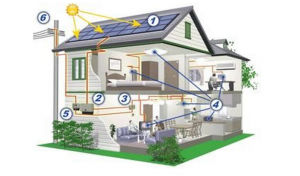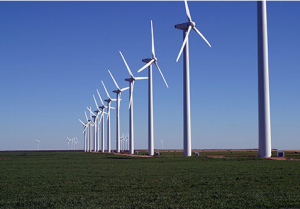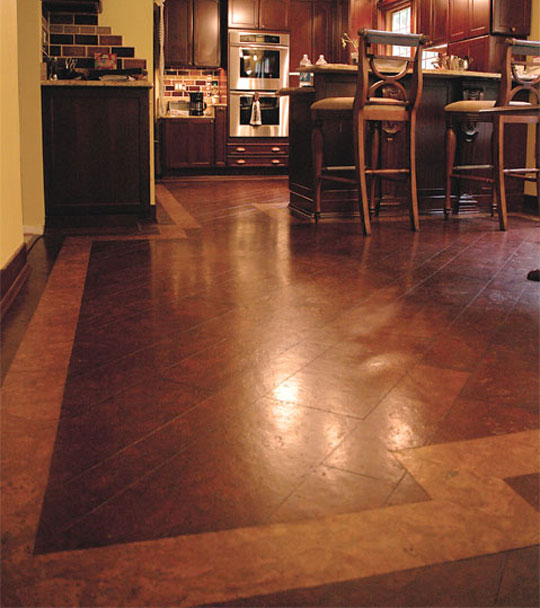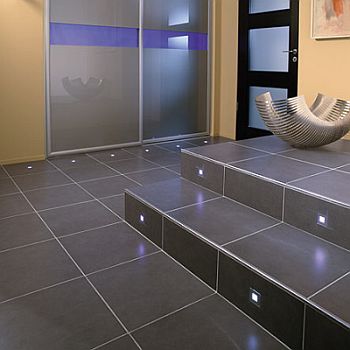An EnerGuide rating shows a standard measure of your home’s energy performance. It shows you (and future buyers) exactly how energy efficient your home is.
The rating is calculated based on standard operation assumptions so that you can compare the energy performance of one house against another.
The home’s energy efficiency level is rated on a scale of 0 to 100. A rating of 0 represents a home with major air leakage, no insulation and extremely high energy consumption.
A rating of 100 represents a house that is airtight, well insulated, sufficiently ventilated and requires no purchased energy on an annual basis (National Resource Canada)
Luckily this home at 1270 Oceanwood in Victoria BC is rated 85 and is a ‘built green platinum’ home – meaning it’s super efficient and available for sale for $895,000. More info here.
Green building and renovations is an emerging trend in the real estate industry and, in my opinion a very exciting and important one. I wanted to share with you a few interesting statistics about the what it means to be GREEN, and what the benefits are!
1. 62% of Canadians are willing to pay between $5000 and under $20,000 for green features, while 8% of respondents are willing to spend over $20,000 or more of a green home. (Royal Lepage/NAGAB Eco Home Survey)
2. The most popular green modifications that poll respondents already implement in their homes include switching from regular light bulbs to CFL light bulbs (74%). (Royal Lepage/NAGAB Eco Home Survey)
3. Almost 3/4 of Canadians (72%) say that they will look for a green-improved property in their next home purchase, and 63% will be willing to pay more for an environmentally friendly home. (Royal Lepage/NAGAB Eco Home Survey)
Installing renewable energy sources to a residence is very site specific and can be thought of as buying 25 years of energy up-front as opposed to the current pay-as-you-go system we are currently accustomed to. Although there are systems available which allow households to harness sunshine, wind and flowing water ( micro hydro) there are 2 essential elements to consider: On-Grid or Off- Grid?
On-Grid systems allow a house hold to produce it’s own energy with the added advantage of pushing energy back onto the grid. There are 2 kinds of on-grid systems. Grid Intertie without batteries and Grid Intertie with batteries.
Grid Intertie without batteries are the simplest systems. They work just like any other appliance in your home – with the notable exception that they create electricity and push it backwards into the power grid. These systems are extremely scalable and flexible.
Grid Intertie with batteries add storage. These energy systems have reserves that will operate when the grid goes down. They also allow flexibility in terms of buying and selling power at different times of the day (to take advantage of time of use electricity metering).
While the costs to install such systems are still high this will change over time. Many believe the investment now will pay off in the future as energy costs increase. Companies like Energy Alternatives Ltd design, supply or install alternative or complementary power systems tailored to specific sites and clients’ needs.
Check back soon for information on off-grid alternative energy systems.
One of the reasons people decide to go GREEN is to make their home a healthier one. If you’re working to make your home an allergy-friendly home then you may want to consider changing out your carpets with a hypoallergenic floor. Here are a few examples of ‘healthy floors’.
Bamboo
The green alternative to hardwood, bamboo is growing in popularity and dropping in price. Bamboo, only takes three years to mature – most hardwood takes between 50 and 100 years – and it flourishes with few pesticides!
Be careful when choosing your bamboo since some brands are made using formaldehyde, and other brands may emit volatile organic compounds (VOCs). Check with your installer if using an adhesive to make sure there is no off-gassing. Be sure to ask a supplier for an emission-free bamboo: it is available and beautiful!
Cork
This is another great and green alternative! Bark from the cork oak tree is harvested carefully (Portugal is a major exporter) and there isn’t much damage to the trees themselves. Some of the trees are hundreds of years old! The bark is then fashioned into tiles that are moisture resistant, making it a good choice, even in the kitchen.
Cork comes in a variety of colours and patterns, and it feels soft underfoot and is very attractive!
Natural Linoleum
Natural linoleum doesn’t refer to the vinyl flooring popular in 1950s kitchens. Today, the word has been reclaimed and is used to describe floors created from organic materials that are stylish and allergy-friendly.
Natural linoleum, also known by the brand name Marmoleum, is made from wood flour and bound together with flax and linseed oils to produce an anti-microbial barrier. Marmoleum comes in a variety of patterns and colours. It is durable, lasting about 30 years.
Tiles
There are lots of varieties of tiles including: ceramic, porcelain, slate, glass, even recycled rubber.
Tiles are easily mopped or wiped clean and are very durable. Once consideration is, when installing tiles, it’s important to use a VOC-free silicone sealer on the grout to ensure that it won’t absorb mildew, mould or dirt.
If you have any more questions about local suppliers or installers please get in touch!
Thanks to http://allergicliving.com for helpful facts!
It’s easy enough to SAY you’re a green Realtor… but what does that actually mean? In an attempt to avoid ‘green washing’ here are a few of the well defined objectives that I have set for myself to provide some accountability and checks and balances for my personal commitment to go GREEN as a Realtor.
In my Real Estate Practice I am committed to:
1. Marketing GREEN properties
2. Helping Buyers locate GREEN properties
3. Continually educating myself (I’m a member of the National Association of Green Agents and Brokers), and other about the benefits of buying and thinking GREEN
4. Being committed to running an ethical business, that is committed to giving back both locally and internationally.
If you have any more questions about buying, or selling GREEN then please get in touch! Your comments and thought are most appreciated.
In my definition GREEN real estate is energy efficient, water efficient, designed for healthy living, constructed with low impact materials, and is easily accessible to amenities.
There are more than 12 million dwellings in Canada and 17% of all energy used in Canada goes towards operating our homes.
Thermal energy plants use over 63% of our water supplies. So reducing electricity consumption in our homes helps reduce water use.
Buying green is the way of the future, and future proof’s your real estate investment!
There are a variety of rating systems available to eco-consious buyers, here is a quick list with definitions, and links:
1. LEED (Leadership in Energy and Environmental Design) and was originally designed for commercial buildings, but is now used for residential energy rating as well. LEED Canada for Homes is the body “that promotes the design and construction of high-performance green homes”. Builders earn points that represent the style of construction used, and the ongoing use of the home after completion. Depending on the level of points earned a home is rated as LEED Bronze, Silver, Gold or Platinum (highest rating available). This rating can be both costly and time consuming to achieve, but is a great representation of a home’s actual impact on the environment.
2. EnerGuide Rating System is a ”standard measure of your home’s energy performance. It shows exactly how energy efficient your home is” (Natural Resource Canada). A home’s energy efficiency level is rated somewhere between 0-100, and the rating of 100 represents a fully airtight and well insulated home. This rating system measures how much power a home uses.
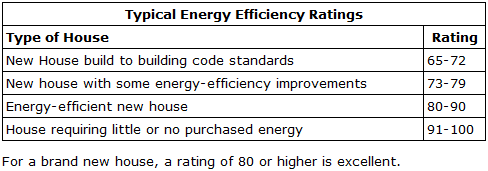 (Chart courtesy of Natural Resource Canada Website)
(Chart courtesy of Natural Resource Canada Website)
3. ENERGY STAR home has an EnerGuide rating of 80 or better and typically contains ENERGY STAR products throughout the home. ENERGY STAR for New Homes initiative promotes guidelines that builders can use to construct energy efficient new homes. ENERGY STAR for New Homes uses the same logo as the familiar labeling program for appliances and electronics and is a quick way to judge whether a home is energy efficient or not.
4. BuiltGreen™ is a third party certified home rating system and the EnerGuide Rating System is part of the certification process. This certification process is used in Alberta, BC and Ontario. Built Green Certification is less expensive and time consuming than LEED certification and this is a more common designation for homes in Victoria to have, but also promoting the use of resource-efficient, environmentally friendly, construction practices and products.
4. R2000 is a voluntary energy efficiency standard for new house. Is was developed by Natural Resources Canada in cooperation with Canadian home-building professionals and the housing industry and has existed since the early 1980s. This system not only considers the energy usage of the home, but the indoor air quality of the property.
5. Power Smart New Home is a BC Hydro program that “supports the nationally accepted EnerGuide rating systems by providing financial incentives and cooperative marketing to new residential home construction. A Power Smart home, will enjoy increased comfort and decreased operating costs for the lifetime of the home and will be a good selling feature in the future”. (BC Hydro Website)
For more information or details on how these ratings affect the market value of a home please contact us.



